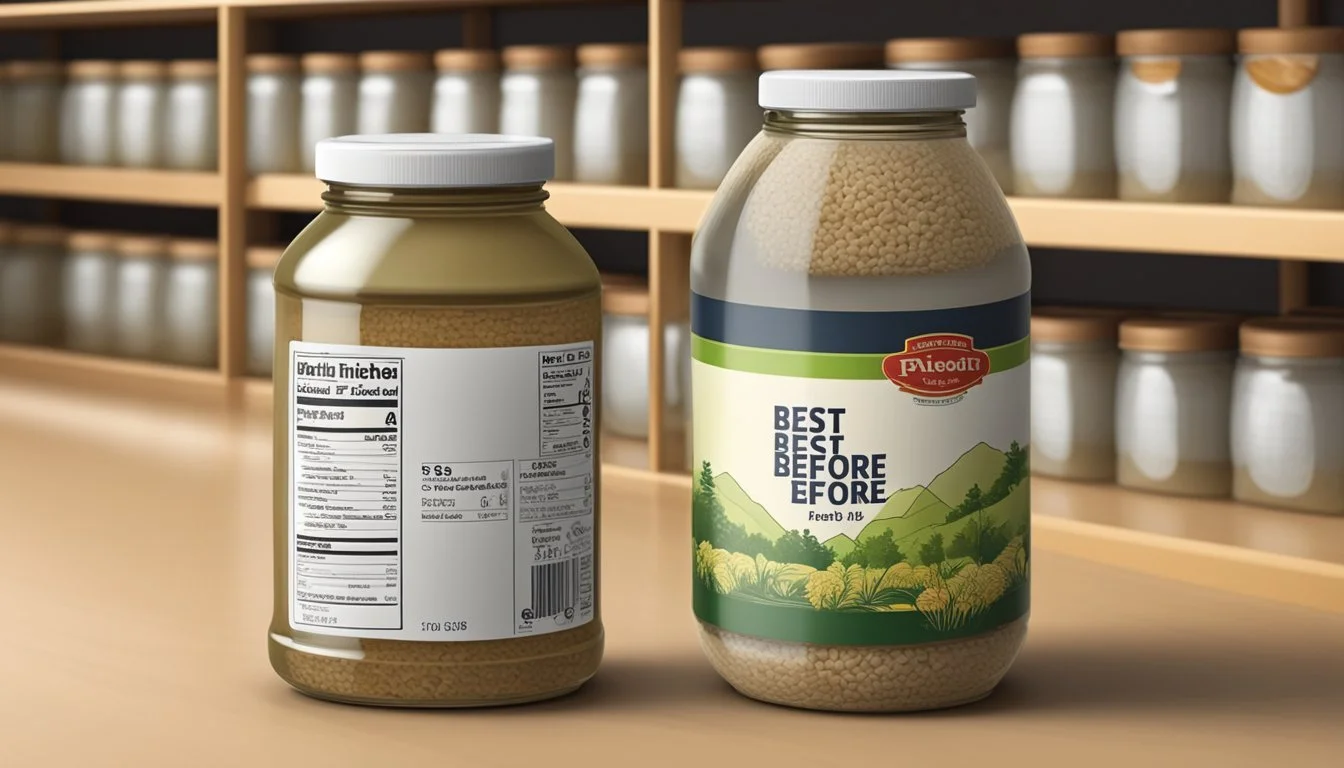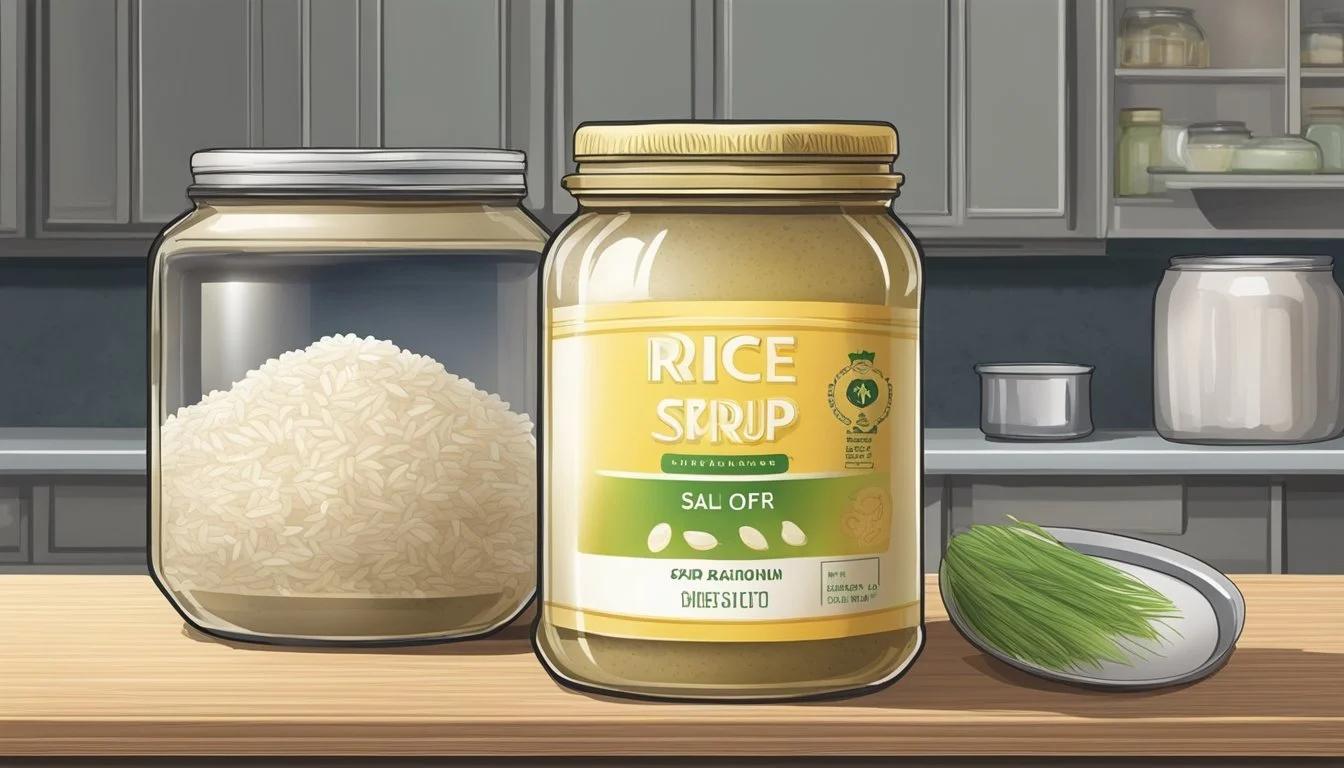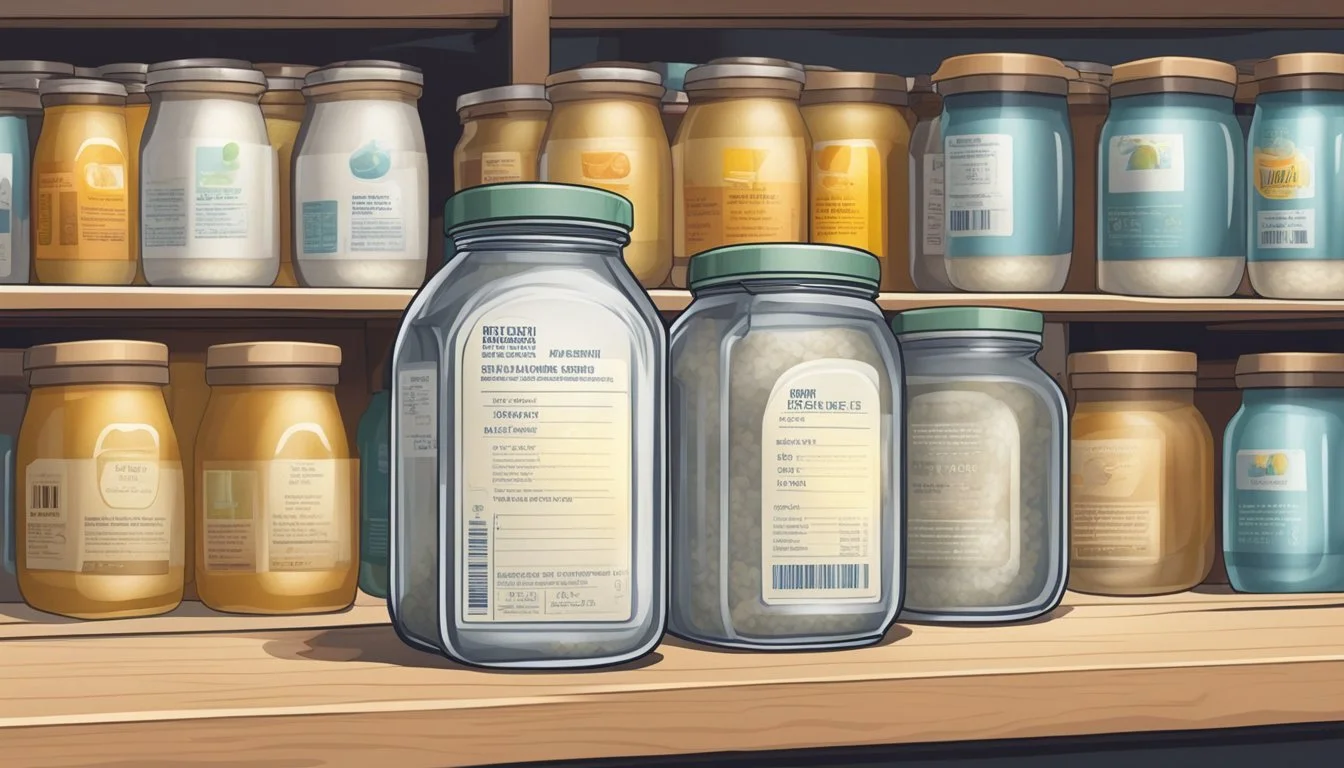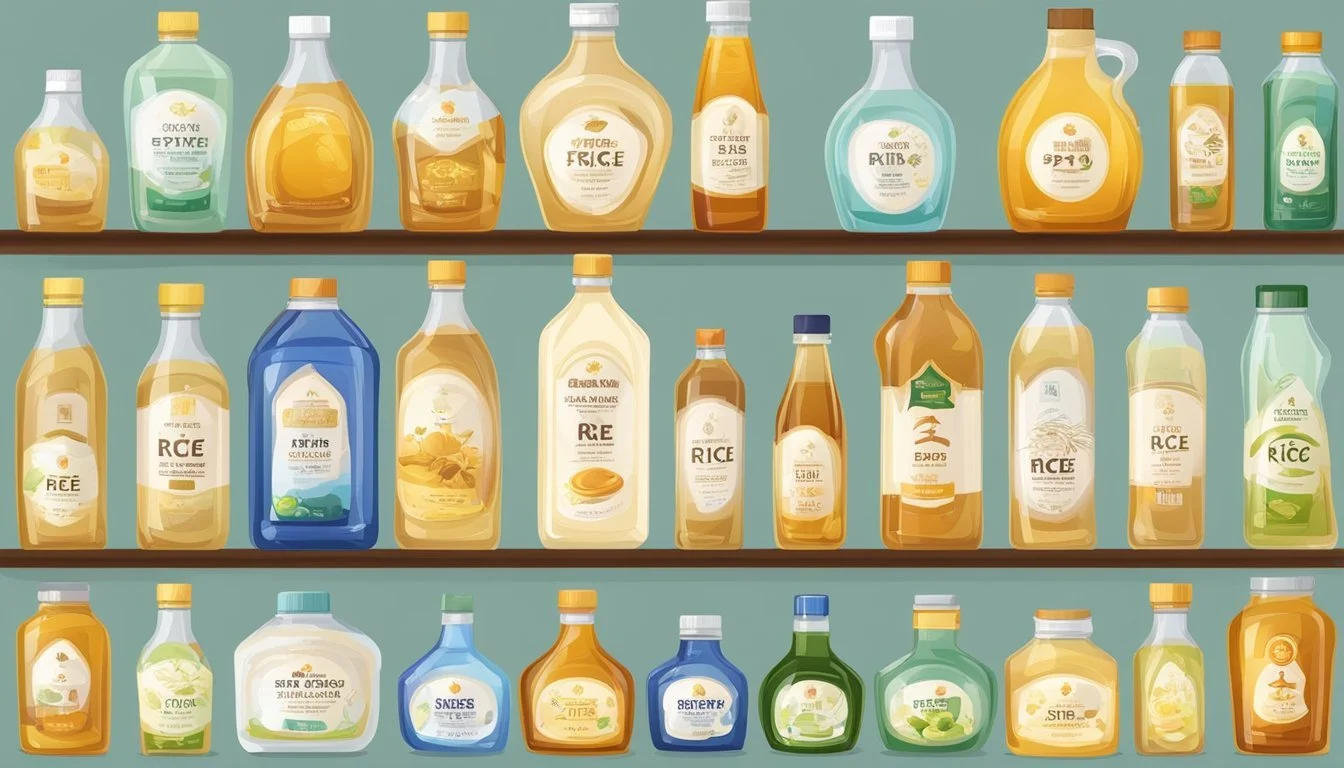How Long Does Rice Syrup Last?
Shelf Life and Storage Tips
Rice syrup, a sweetener derived from rice (What wine goes well with rice?), is a common alternative to sugar in many culinary applications. Its shelf life is an important consideration for both consumers and manufacturers, as it dictates how long the syrup can be used without compromising its quality. Generally, rice syrup can last about a year when stored at room temperature. The longevity of rice syrup is contingent on proper storage conditions: it should be kept away from direct sunlight and in a cool, dry place.
When rice syrup is stored in the refrigerator, it tends to crystallize and harden, which leads to changes in its texture, though not necessarily in its edibility. To extend the shelf life and maintain the quality of rice syrup, it's important to use a dry spoon when scooping it out to prevent the introduction of moisture into the product. Moisture can foster an environment conducive to microbial growth, which may spoil the syrup prematurely.
Overview of Rice Syrup
Rice syrup, a plant-based sweetener, is often utilized as an alternative to refined sugar. Derived primarily from brown rice, it provides a milder sweetness compared to traditional granulated sugar. The syrup is created by breaking down rice starches into simple sugars using natural enzymes. During processing, the resulting liquid is concentrated to a syrup-like consistency.
Nutritional Composition:
Primarily composed of maltose
Low in fructose
Contains a mix of complex carbohydrates
In terms of nutrition, rice syrup differs from refined sugar due to its lack of fructose and the presence of maltose. The syrup's sweetness comes from glucose and maltose, contributing to its overall calorie content. The glycemic index of rice syrup is considered high which means it can cause a rapid increase in blood sugar levels, making it an important consideration for those monitoring their blood glucose.
Rice syrup can be utilized in various culinary applications, serving as an ingredient in baking, cooking, or as a topping. Its versatility and sweetness make it a popular choice, particularly in health-conscious circles that prefer natural sweeteners. However, it is crucial to recognize that while it is plant-based, rice syrup remains a calorie-dense sweetener and should be consumed in moderation.
Understanding Shelf Life
Rice syrup typically has a shelf life of approximately one year when stored at room temperature. Proper storage away from sunlight is essential to maintain its quality. The shelf life can be affected by various factors and understanding expiration dates is crucial for safe consumption.
Factors Affecting Shelf Life
The longevity of rice syrup's usability depends on several key factors:
Storage Conditions: Rice syrup should be stored in a cool, dry place to prevent spoilage. Exposure to heat, light, or humidity can accelerate degradation, potentially reducing its shelf life.
Container Integrity: Once opened, rice syrup must be kept in an airtight container to reduce the risk of contamination and moisture, which can lead to crystallization and hardening.
Temperature Fluctuations: Consistently cool temperatures are favorable. Refrigeration can cause crystallization, altering texture but potentially prolonging shelf life.
Reading Expiration Dates
To safely consume rice syrup, one must pay attention to the details on the packaging:
Expiration Date: This is the date after which the syrup should not be consumed. However, if stored properly, rice syrup may remain safe to consume after this date but may have lost some quality.
Best Before Date: This date indicates when the syrup is expected to be at its peak quality. Beyond this date, it may still be safe to eat but may have diminished flavor or texture.
Rice syrup’s durability can make it a resilient sweetener choice, provided that one remains mindful of influencing factors and clearly marked dates.
Proper Storage Techniques
Preserving the quality and extending the shelf life of rice syrup hinges on appropriate storage methods. The storage techniques discussed here focus on temperature control, proper selection of containers, and safeguarding from environmental factors.
Storing in Pantry
A cool, dry pantry is suitable for short-term storage of rice syrup. It should be kept away from direct sunlight and sources of heat to avoid degradation. Room temperature storage is fine for sealed rice syrup with the expectation it will be used within a few months.
Refrigeration and Freezing Options
For long-term preservation, rice syrup can benefit from refrigeration or freezing. Refrigeration extends the syrup's shelf life by slowing down the growth of microorganisms. Freezing, while less commonly recommended, is an option if the syrup is stored in a freezer-safe container.
Container Choices
Rice syrup should be stored in airtight containers to maintain its quality and extend shelf life. Glass containers are preferable as they can provide an effective airtight seal and do not react with the syrup. They also protect from light which can degrade the syrup's quality.
Protection from Contaminants
Finally, rice syrup must be shielded against moisture and air ingress to prevent spoilage. Sealing the syrup in containers with a strong airtight seal is critical, as is using clean utensils to prevent introducing contaminants that could spoil the syrup prematurely.
Signs of Spoilage
When rice syrup goes bad, it often presents clear indicators such as texture changes, color shifts, and unwelcome odors or mold. Identifying these signs early can prevent the risks associated with consuming spoiled products.
Changes in Texture and Consistency
Rice syrup should have a relatively thick yet pourable consistency. Any drastic deviation, such as the syrup becoming excessively thicker or starting to crystallize, suggests spoilage. The syrup should not have separated layers or a gritty texture. If it is noticeably harder to pour or has solidified, this is an indication that the syrup is bad.
Color and Odor Alterations
Fresh rice syrup typically possesses a light golden color. If one observes discoloration or the syrup becomes darker than usual, this could signal spoilage. Additionally, any rancid or unusual odors are strong indicators that the syrup should not be used. Since rice syrup is relatively neutral in flavor, any alterations in taste or the presence of an off-flavor also denote that the syrup may have gone bad.
Mold and Contamination Indicators
Visible signs of mold growth or other forms of contamination are definitive evidence that rice syrup should not be consumed. The presence of mold, which can appear as greenish or black spots, poses serious health risks. If mold is detected, it is crucial to discard the syrup immediately to avoid potential health hazards. Any unfamiliar particles or debris in the syrup are also signs that it has been spoiled or contaminated.
Tips to Extend Rice Syrup's Shelf Life
Proper storage of rice syrup is crucial for maintaining its quality and safety. Here are some effective strategies:
Storage Environment: Rice syrup should be kept in a cool and dry place, away from direct sunlight. This helps preserve its freshness and extends its shelf life.
Container Choice: The syrup should be stored in an airtight container to keep out moisture and contaminants. Glass containers with tight-sealing lids are a good choice.
Condition Recommendation Light Store away from direct sunlight Air Use airtight containers Moisture Keep the container dry
Refrigeration: While not necessary, refrigeration can help extend the shelf life of rice syrup. If you choose to refrigerate the syrup, be aware it may thicken and crystallize, altering its texture.
Humidity Control: It is important to avoid placing rice syrup in areas with high humidity levels. High humidity can lead to condensation inside the container, which might cause spoilage.
Utensil Hygiene: Always use a dry spoon when scooping out rice syrup. Introducing moisture into the syrup can create an environment for bacterial growth.
By adhering to these tips, one can help extend the shelf life of rice syrup, ensuring it stays in good condition for a longer period. Temperature and humidity control, alongside proper container usage, play a significant role in preserving rice syrup.
Usage of Rice Syrup in Foods
Rice syrup serves as a versatile sweetener in various culinary applications due to its mild flavor and binding properties. It is frequently used as an alternative to sweeteners like honey, maple syrup, and molasses.
Rice Syrup in Baking
In baking, rice syrup can act as a natural sweetener that imparts a subtle sweetness without overpowering other flavors. It's particularly suitable for recipes that require a smooth texture, like bar cookies and muffins. Bakers may substitute rice syrup for other liquid sweeteners, such as honey or maple syrup, using a 1:1 ratio, making adjustments for its less pronounced sweetness.
Rice Syrup in Cooking
Rice syrup shows its versatility in cooking, where it can enhance the flavors of various dishes. It's an excellent addition to glazes for meats or vegetables, contributing to a shiny and appealing finish. Moreover, rice syrup can be integrated into sauces and dressings, balancing acidity and spice with its mellow sweetness.
Pairing with Beverages and Confectioneries
In the realm of beverages, rice syrup can be a sweetening agent in coffee or tea, providing a less intense sweetness than sugar. When used in confectioneries, it's a beneficial ingredient in the creation of chewy textures, such as those in caramels and taffies. Additionally, rice syrup can be drizzled over breakfast items like pancakes, waffles, and ice cream, complementing their flavors with its mild sweetness and imparting a pleasant texture.
Alternatives to Rice Syrup
When rice syrup is unavailable or unsuitable for a recipe, there are multiple alternatives that one can consider. Each substitute offers distinct characteristics that may affect the final outcome of a dish.
Corn Syrup: A common choice is corn syrup, which has a similar viscosity and neutral flavor, making it a direct replacement in terms of texture and sweetness.
Maple Syrup: For those desiring a natural sweetener with a robust flavor, maple syrup is an excellent option. While it imparts a distinct taste, it can add a rich depth to recipes.
Honey: Honey is another natural alternative with a stronger flavor profile. It's sweeter than rice syrup, so one may need to adjust the quantity used.
Simple Syrup: Comprising equal parts water and sugar, simple syrup can be used when a liquid sweetener is necessary, although it is thinner in consistency.
Molasses: This by-product of sugar refining offers a warm, caramel-like sweetness and is rich in minerals, giving it a unique flavor that stands out in baked goods.
Barley Malt Syrup: Although less common, barley malt syrup can be used for its similar malt flavor and binding properties.
Date Syrup: With a deep, fruity flavor, date syrup is a less processed option that also provides additional nutrients.
When substituting rice syrup with any of these alternatives, it's important to consider the flavor profile and consistency of the sweetener, as well as how it will interact with the other ingredients in the recipe. The choice of alternative may vary depending on whether the dish is savory or sweet.
Health Implications of Rice Syrup
When considering the health implications of rice syrup, one of the most notable factors is its glycemic index (GI). Rice syrup has a high GI, typically around 98, which means that it can cause a rapid increase in blood sugar levels. This is particularly relevant for individuals managing diabetes or those trying to control blood sugar spikes.
In terms of calories, rice syrup provides about 75 calories per tablespoon, which is higher compared to the 42 calories provided by the same amount of table sugar. High-calorie intake, if not balanced with the overall diet, can lead to weight gain.
Rice syrup is gluten-free and vegan, making it a suitable sweetener for those with specific dietary restrictions. However, the nutritional profile is relatively low in minerals and vitamins since it primarily consists of sugars like glucose.
There's also the consideration of arsenic contamination in rice syrup. Since rice can absorb arsenic from the environment, rice-based products may contain traces of this element. Long-term exposure to arsenic has been associated with health risks, though organic versions of rice syrup might have lower levels of contaminants.
Lastly, the storage and use of rice syrup should prevent the growth of microorganisms or bacteria. It is recommended to use a dry spoon when handling the syrup to avoid introducing moisture that could promote contamination.
Microorganisms and Bacteria: Use a dry spoon to avoid contamination.
Calories: Contains 75 calories per tablespoon.
Blood Sugar Levels: High Glycemic Index (around 98).
Health Risks: Potential arsenic contamination; consume in moderation.
Varieties of Rice Syrup
Rice syrup, an alternative sweetener derived from rice, comes in various forms. Brown rice syrup, also known as rice malt syrup, is one notable variety. It is made by breaking down the starches in cooked rice (how long does cooked rice last?), typically brown rice due to its whole-grain attribute, and then adding enzymes to further convert these starches. The result is a thick, sweet syrup that retains a subtle malt-like flavor.
Organic brown rice syrup is a popular choice among consumers seeking natural and minimally processed foods. The term "organic" signifies that the rice used was grown without synthetic pesticides or fertilizers, thus making it a preferred ingredient for those mindful of their consumption choices and the environment.
Type Base Ingredient Characteristic Brown Rice Syrup Brown Rice Thick, sweet, malt flavor Organic Brown Rice Syrup Organic Brown Rice Natural, less processed
Rice malt syrup, while sometimes used synonymously with brown rice syrup, can refer to syrups derived from different rice varieties as well. In general, rice malt syrup is known for its subtle sweetness and is less sweet compared to conventional table sugar.
Despite the variety, all rice syrups are gluten-free and can be used as a sugar substitute in various recipes, making them a versatile ingredient in the kitchen. These syrups are often the derivative of enzymatic processes that break down the starches into simpler sugars, making them easily digestible and providing a gradual release of energy.
Common Questions about Rice Syrup
When it comes to extending the shelf life of rice syrup and understanding its spoilage, proper handling and storage are crucial. Knowing how to manage an opened container and identifying spoilage are key to maintaining the quality of rice syrup.
Handling Opened Rice Syrup Containers
Once a container of rice syrup is opened, it should be sealed tightly after each use. Storing the syrup in the refrigerator can significantly extend its shelf life, maintaining both its taste and quality. It is recommended to keep the syrup away from strong-smelling foods in the fridge, as it can absorb odors.
Steps for Storage:
Ensure the cap is closed tightly.
Keep the syrup in the refrigerator.
Place it in an area of the fridge with minimal odor exposure.
Identifying When Rice Syrup Is Bad
Rice syrup that has gone bad will usually show noticeable signs. If there is any visible mold or an off odor, the syrup should not be consumed. Additionally, any change in color or consistency can also indicate spoilage. It is advised to err on the side of caution and discard any syrup that has questionable changes in appearance or smell.
Signs of Spoilage:
Presence of mold
Unusual odors
Color changes
Altered consistency
Preventative Measures for Rice Syrup Storage
Maintaining the quality of rice syrup is essential for both taste and safety. The right storage techniques can significantly extend its life. Here are some specific strategies to keep rice syrup at its best.
Use of Preservation Additives
Certain additives can help stabilize rice syrup and prevent spoilage.
Vinegar or Soy Sauce: Small amounts of vinegar or soy sauce can be mixed into the syrup. These ingredients are known for their natural preservative properties due to their acidity and salt content, respectively.
Commercial Preservatives: Some commercial rice syrups include preservatives that enhance shelf life. One should always read the labels to understand what additives are present and ensure they align with personal dietary preferences.
Natural Preservation Methods
Implementing natural methods can be an excellent way to preserve rice syrup without additives.
Airtight Container: Storage in an airtight container is crucial. It reduces the syrup's exposure to air, which can lead to contamination and spoilage.
Cool, Dry Place: Keeping rice syrup in a cool, dry place, like a pantry or cupboard, away from heat sources and light, will aid in preserving its quality.
Refrigeration: Although not always necessary, storing rice syrup in the fridge can prolong its shelf life once opened, especially in warmer climates.
Natural Preservatives: Bay leaves and sage are traditional natural preservatives. They can be placed in the storage container with the rice syrup to help extend its shelf life while imparting minimal flavor.
By following these preventative measures, one can help ensure that rice syrup remains safe to consume and flavorful for as long as possible.












